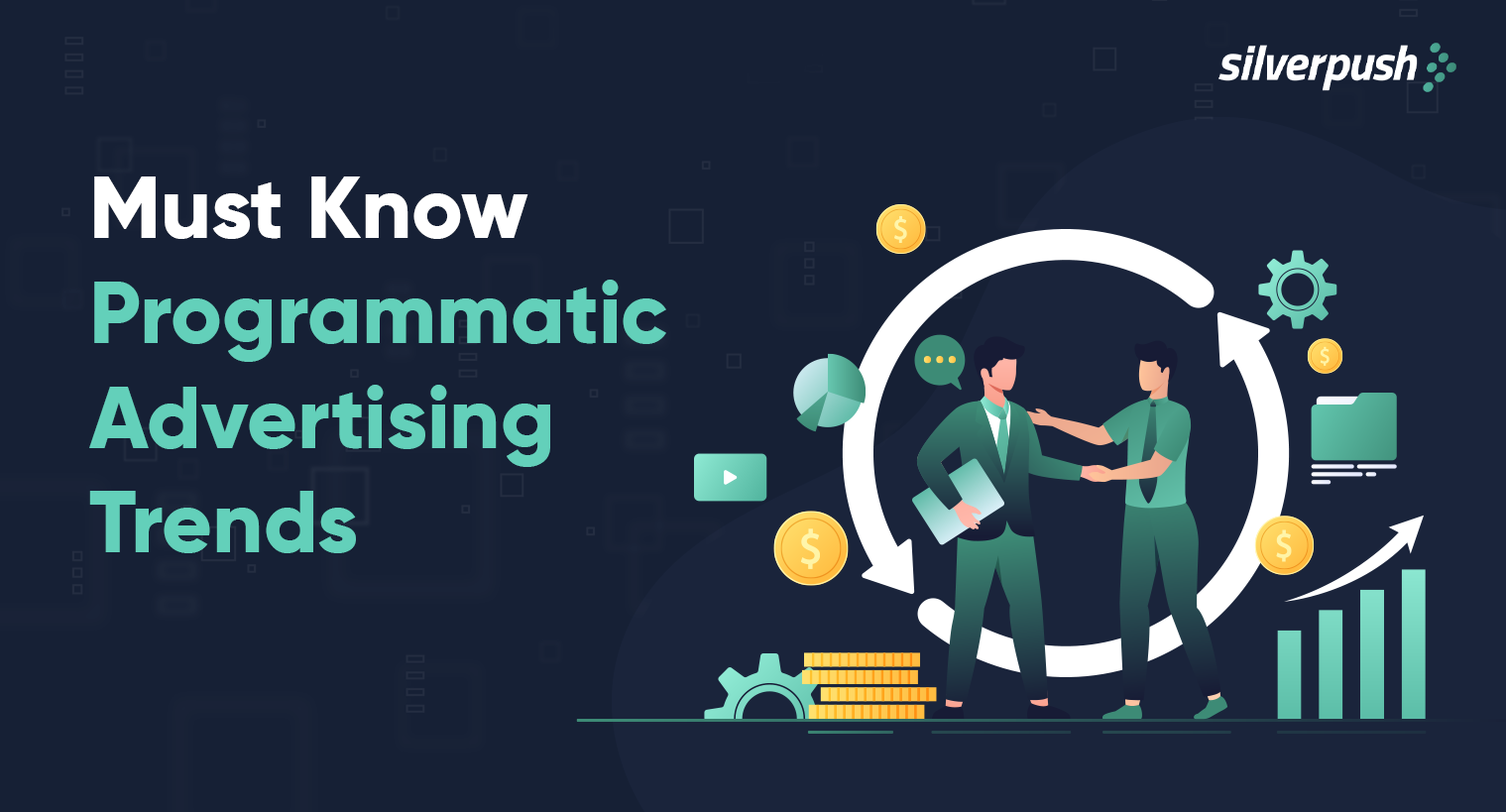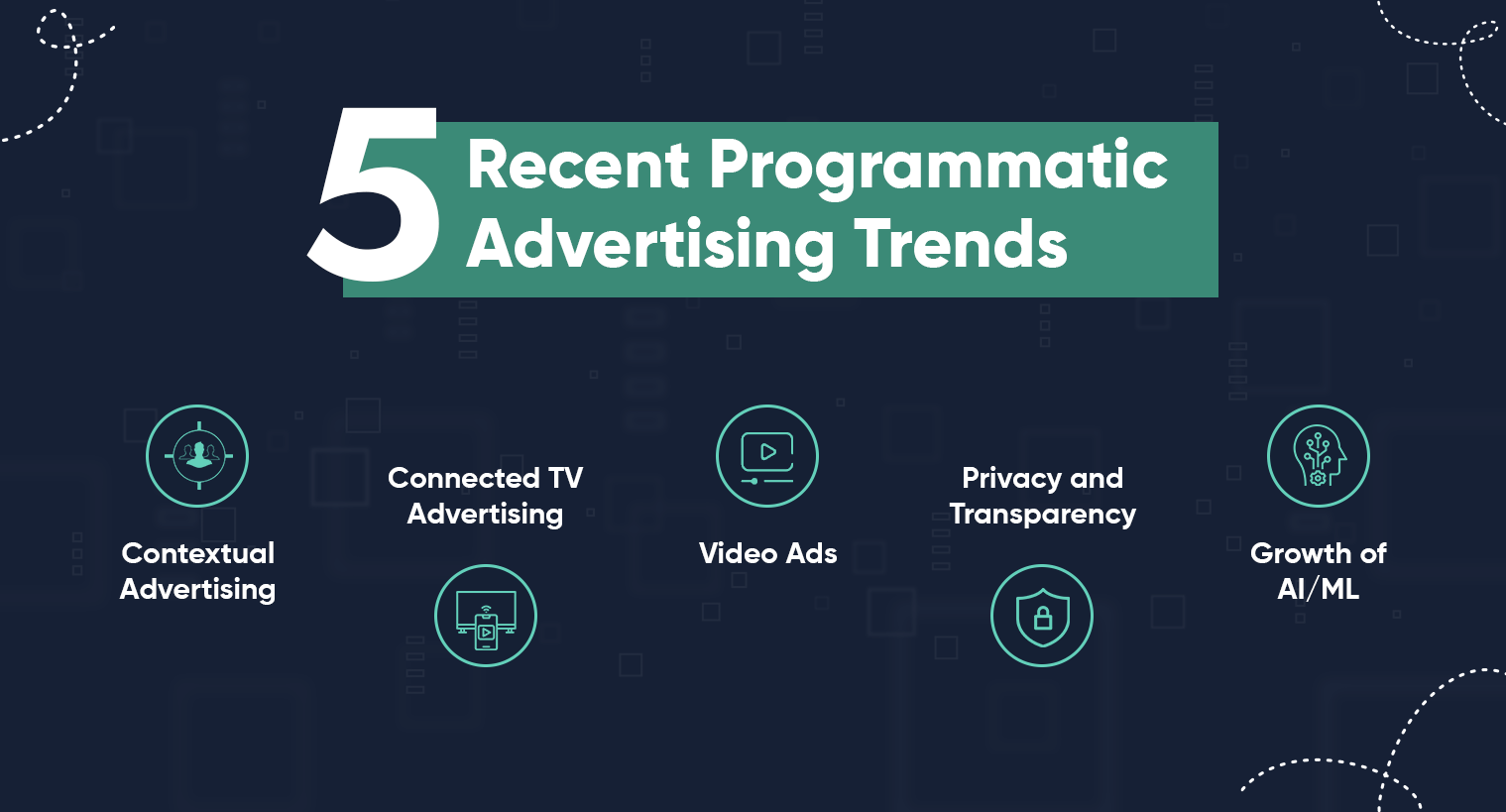The Rise of Programmatic Advertising: Top 5 Trends Shaping the Industry | 28 Feb, 2023

Want to know where programmatic advertising is headed? Check out the blog which talks about the top 5 programmatic advertising trends to keep an eye on, including the rise of connected TV, the importance of privacy and transparency, and more.
Programmatic advertising has revolutionized the world of digital marketing by utilizing automation to buy and sell digital ad space. This approach has replaced the traditional manual process that relied on human interaction and negotiation between publishers and marketers.
The use of data-driven strategies has enabled programmatic advertising to streamline and accelerate ad buying processes, resulting in increased campaign efficiency.
Recent estimates indicate that programmatic advertising generated 418 billion U.S. dollars in 2021 and is projected to reach 725 billion by 2026. Given these impressive figures, it’s natural to wonder if programmatic advertising is the future of advertising.
To answer this question and stay up-to-date with the latest trends, let’s take a closer look at the new trends in programmatic advertising.
5 Recent Programmatic Advertising Trends

1. Contextual Advertising Stands Strong
Contextual targeting is a straightforward yet powerful method of advertising that continues to be a key programmatic trend to watch, particularly in light of the decline of cookies. In digital advertising, contextual targeting is becoming increasingly important as ads are placed based on the context of the website, rather than relying on a user’s online behavioral data.
With contextual targeting, advertisers can reasonably assume that those who see their ads are more likely to be interested in them due to the web page’s context. As users have grown weary of seeing irrelevant ad creatives in inappropriate locations, banner blindness has become more prevalent. To address this, advertisers must enhance the ad experience by using personalized and relevant ads in the right context, thereby improving engagement and driving better results.
Also read: https://www.silverpush.co/blogs/what-is-programmatic-advertising/
2. Connected TV Advertising Continues to Grow
Connected TV usage among millennials is expected to grow from 60.5 million monthly users in 2022 to 62.6 million by 2025.
Prior to Covid, 76% of U.S. households had at least one connected device, with a total of 12.5 billion use hours per month. Following the pandemic, this figure increased by 81%, resulting in 4 billion hours of CTV use every week.
As a result, buyers are planning to allocate more of their advertising budget to CTV in 2023, with IAB reporting that ad spend is being reallocated from broadcast (53%) and cable TV (52%) advertising to CTV.
This makes CTV one of the most intriguing programmatic advertising trends to watch in 2023. Advertisers must pay close attention to the procurement process, methods, and measurements that need to be reevaluated in response to this trend. Although CTV advertising is still in its early stages, those who adapt and stay ahead of the curve will benefit from the rewards.
3. Video Ads
The popularity of video content continues to soar, with video consumption expected to account for 82% of consumer internet traffic this year. As a result, video ad spending is projected to increase year after year. In 2021, programmatic video advertising spending in the United States reached an estimated 52.17 billion U.S. dollars, and this figure is expected to grow even further to reach 74.88 billion dollars by the end of 2023.
Notably, video advertising is considered to be the most impactful format for high-impact display ads, contributing to the growth in programmatic video spend. Given that programmatic video spending is expected to represent the majority of total programmatic digital display spending in the US this year, it’s clear that automated video ad buying has become the standard approach for distributing digital video commercials.
4. Growing Need for Privacy and Transparency
As privacy and transparency become top priorities, marketers must adapt to a world without third-party data. With the rise of new privacy laws like GDPR and the California Privacy Act, traditional tracking methods are no longer viable. While advertisers can still obtain user data with their consent, relying solely on tracking cookies to target and personalize ads is no longer an option. The recent moves by Apple, Firefox, and Google to end third-party cookie support further emphasize the need for innovative and reliable workarounds in programmatic advertising. At this critical juncture, it’s time for marketers to prioritize transparency and build trust with their audiences by adopting new, privacy-first strategies.
5. Use of AI/ML Rapidly Expands
The rise of Artificial Intelligence and Machine Learning (AI/ML) is revolutionizing programmatic advertising by enhancing targeting, optimization, and prediction capabilities. By leveraging AI algorithms, brands can now automate and optimize their ad-buying process to ensure that their messages reach the right people at the right time.
As AI and ML technologies continue to advance, programmatic advertising platforms are incorporating these tools to improve ad targeting, creative optimization, and budget allocation in real time. With AI/ML-driven automation, brands can create personalized experiences for each customer, as seen in Overstock’s successful implementation of AI for individualized customer experiences. The increasing use of AI/ML in programmatic advertising is paving the way for more efficient and effective ad campaigns, providing brands with a competitive edge in the digital marketing landscape.
Conclusion
Programmatic advertising is an ever-evolving field that requires constant attention and adaptation to stay ahead of the curve. From the growing need for privacy and transparency to the increasing use of AI and Machine Learning technologies, these five programmatic advertising trends are transforming the digital advertising landscape. As programmatic advertising continues to evolve, it’s crucial for brands to stay up-to-date on the latest trends and developments. By doing so, they can ensure that their advertising campaigns remain relevant, engaging, and effective in today’s rapidly changing digital marketing landscape.

BLOGS
Migrate from Oracle to Silverpush: Unlock Advanced Contextual Advertising Solutions
The news that Oracle plans to shut down its advertising business by the end of September has sent shockwaves through the ad industry. Once the most prominent advertising data seller in the market, Oracle is now closing its advertising division. This included Datalogix for offline consumer data, Grapeshot for contextual ...

BLOGS
Cannes 2024 Recap: Silverpush Takes AI Discussions to the French Riviera
As Cannes 2024 concludes, the echoes of vibrant discussions, insightful panels, and significant meetings continue to resonate. This year’s central theme was clear: AI's growing dominance in advertising solutions, optimizing campaigns for business outcomes, and reaching audiences effectively across various screens. With videos becoming increasingly digital, the potential for more addressable ...

BLOGS
UK Programmatic Advertising Spending & Trends in 2024
In 2023, programmatic advertising spending in the UK reached roughly £30.6 billion. The programmatic display advertising market is projected to grow by 12.6% in 2024, bringing it to within just four percentage points of becoming fully programmatic. This highlights how integral this technology has become to the UK ad industry. ...







